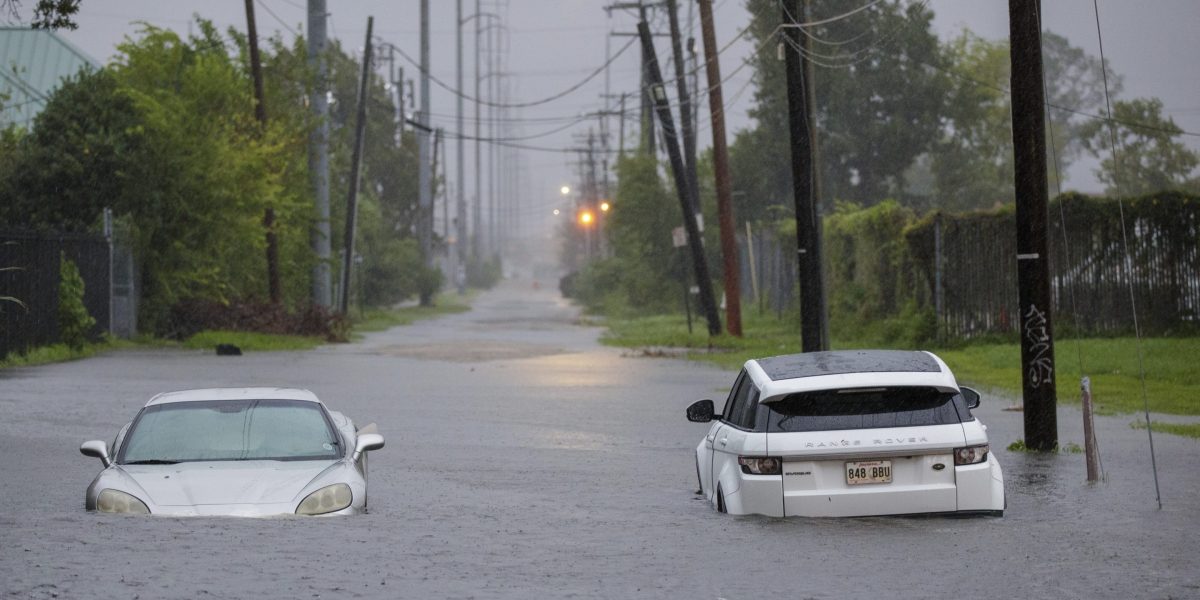The most recent major hurricanes to hit the U.S. left hundreds of people dead and caused billions of dollars worth of damage.
HURRICANE BERYL – 2024
Hurricane Beryl was the first of the 2024 Atlantic hurricane season, according to the National Oceanic and Atmospheric Administration. Exceptionally warm ocean temperatures caused it to strengthen into a Category 5 storm rapidly in early July. It’s winds peaked at 165 mph (270 kph) before weakening to a still-destructive Category 4.
When hurricane Beryl hit Texas, it had dropped to a Category 1 storm. Beryl has been blamed for at least 36 deaths. The storm caused an estimated $28 billion to $32 billion in damages, according to AccuWeather’s preliminary estimates.
HURRICANE IDALIA – 2023
Hurricane Idalia slammed into Florida on Aug. 30, 2023 with 125-mph (201-kph) winds that split trees in half, ripped roofs off hotels and turned small cars into boats before sweeping into Georgia and South Carolina where it flooded roadways and sent residents running for higher ground.
The category 4 hurricane was the largest to hit Florida’s Big Bend region in more than 125 years. The storm left 12 dead and produced 5 to 10 inches of rain across Florida, Georgia and the Carolinas, leaving damages topping $3.6 billion, according to the National Hurricane Center.
HURRICANE IAN – 2022
Hurricane Ian briefly reached maximum Category 5 status before weakening to a Category 4 storm as it blasted ashore in September 2022 in southwest Florida. The storm caused more than $112 billion in damage in the U.S. and more than 150 deaths directly or indirectly, according to the National Oceanic and Atmospheric Administration.
The agency reported that Ian was the costliest hurricane in Florida history and the third-costliest ever in the U.S. as a whole. In addition to Florida, Ian impacted Georgia, Virginia, the Carolinas and Cuba before it fell apart Oct. 1, 2022.
HURRICANE IDA – 2021
Hurricane Ida roared ashore in Louisiana as a Category 4 storm with 150-mph (241-kph) winds in late August 2021, knocking out power to New Orleans, blowing roofs off buildings and reversing the flow of the Mississippi River as it rushed from the Louisiana coast into one of the nation’s most important industrial corridors.
At the time it was tied for the fifth-strongest hurricane ever to hit the mainland. At least 91 deaths across nine states were attributed to the storm – most from drowning, according to the Centers for Disease Control and Prevention. Damages from the storm were estimated to be about $36 billion.
HURRICANE ZETA – 2020
Hurricane Zeta left millions without power when it hit southeastern Louisiana on October 29, 2020. It had weakened to a tropical storm after leaving the Yucatan Peninsula but intensified to a category 3 storm before making landfall.
The hurricane caused five direct fatalities and about $4.4 billion in damage in the United States, according to the National Hurricane Center.
HURRICANE DELTA – 2020
When Hurricane Delta slammed into Louisiana on Oct. 9, 2020, residents were still cleaning up from Hurricane Laura, which had taken a similar path just six weeks earlier. Delta was a category 4 storm before it made two landfalls – both at category 2 intensity, according to the National Hurricane Center.
It first hit the Yucatan Peninsula before coming ashore in southwestern Louisiana. Delta cost $2.9 billion in the United States and was linked to six deaths in the U.S. and Mexico, according to a report from the National Hurricane Center.
HURRICANE LAURA – 2020
Hurricane Laura, a category 4 storm, roared ashore in southwest Louisiana on Aug. 27, 2020, packing 150-mph (240-kph) winds and a storm surge as high as 15 feet (4.5 meters) in some areas. Laura was responsible for 47 direct deaths in the United States and Hispaniola, and caused about $19 billion in damage in the U.S., according to the National Hurricane Center.
The deaths included five people killed by fallen trees and one person who drowned in a boat. Eight people died from carbon monoxide poisoning due to unsafe operation of generators.

